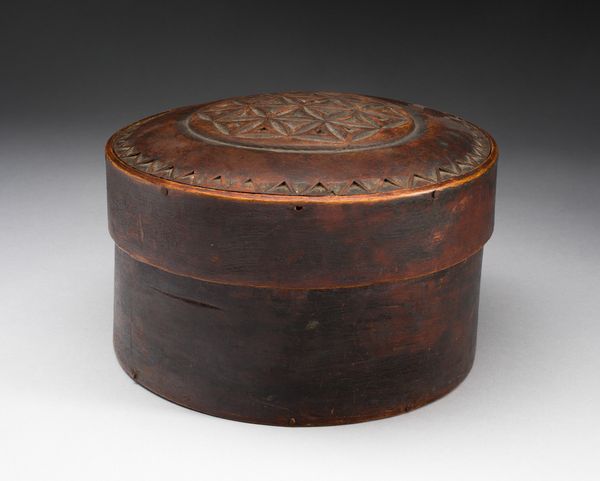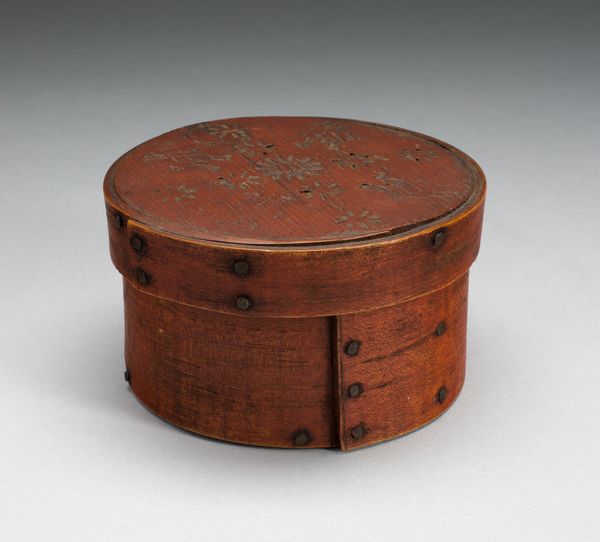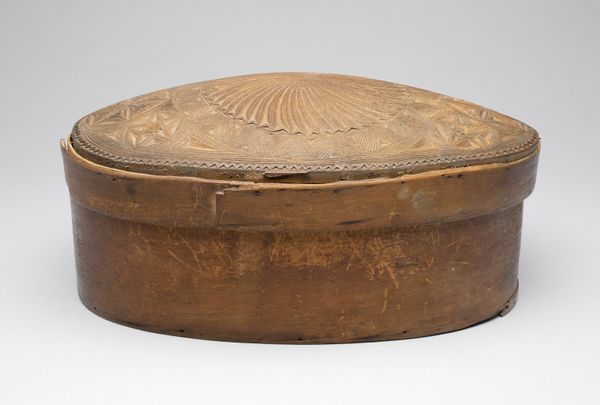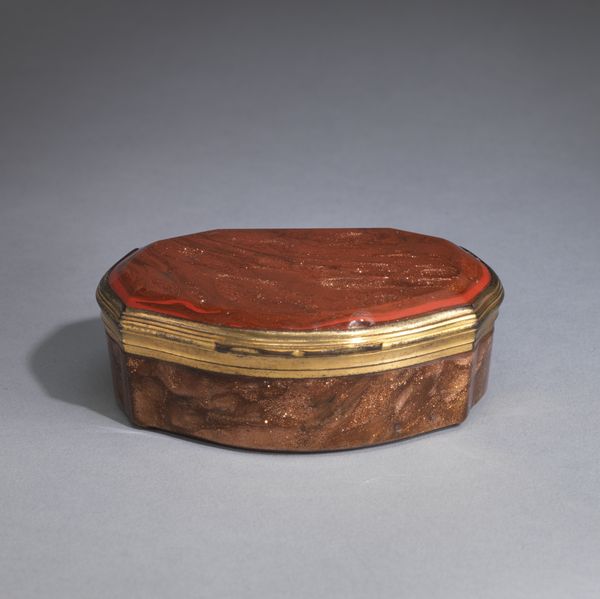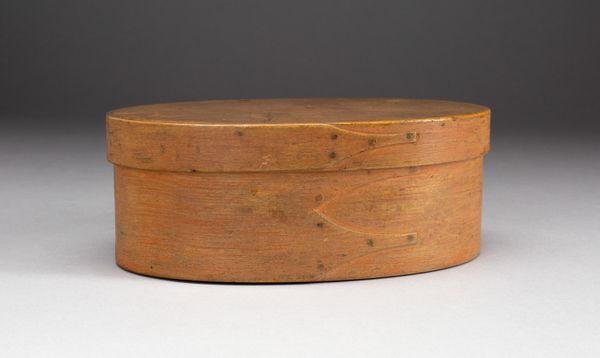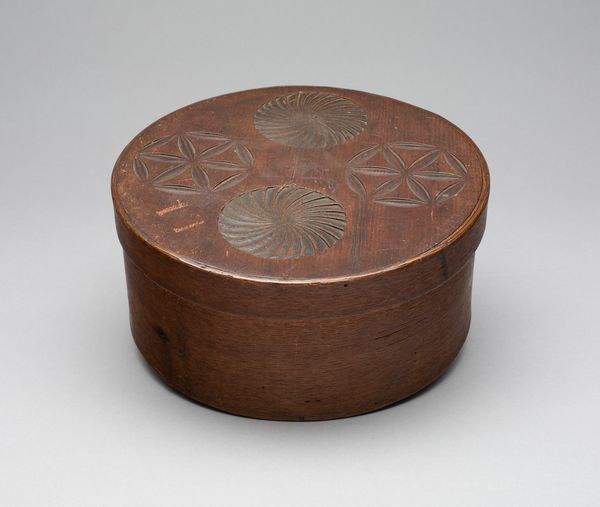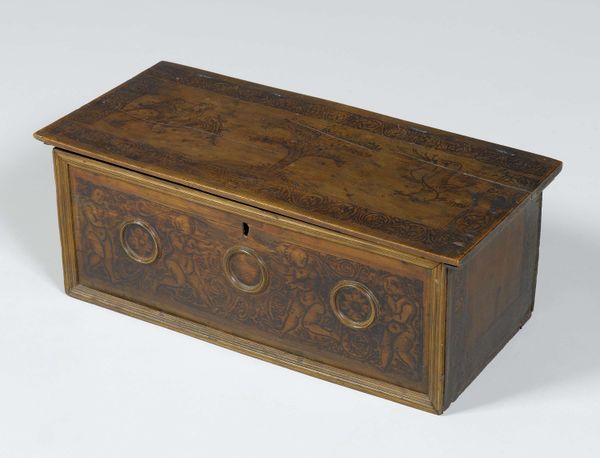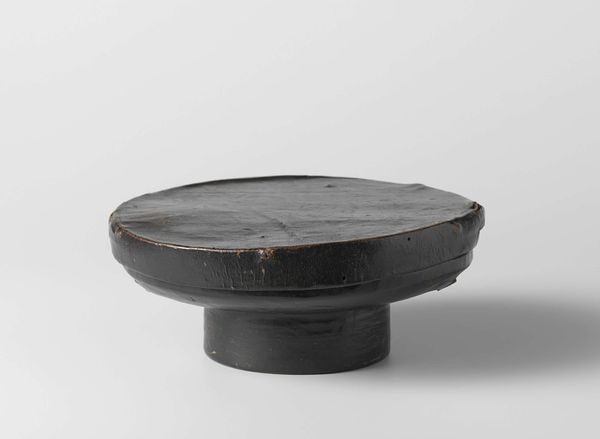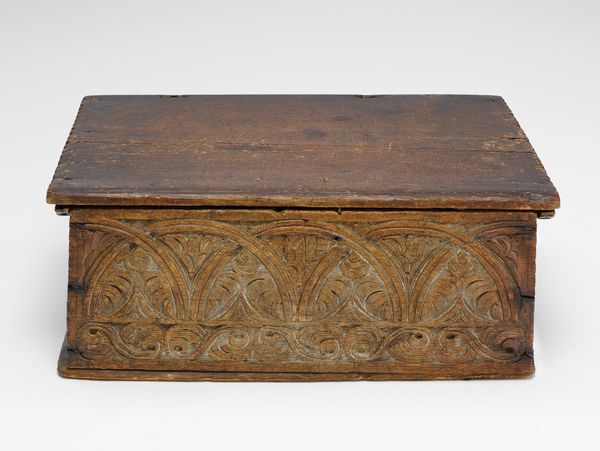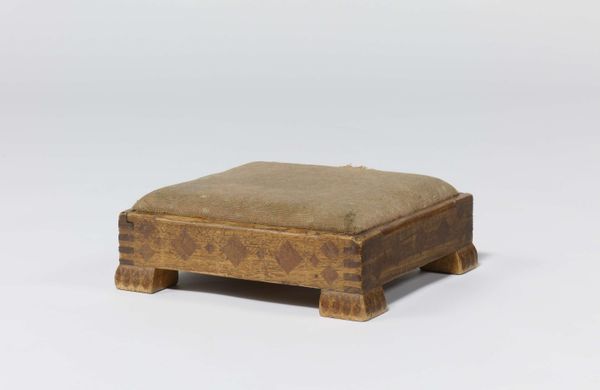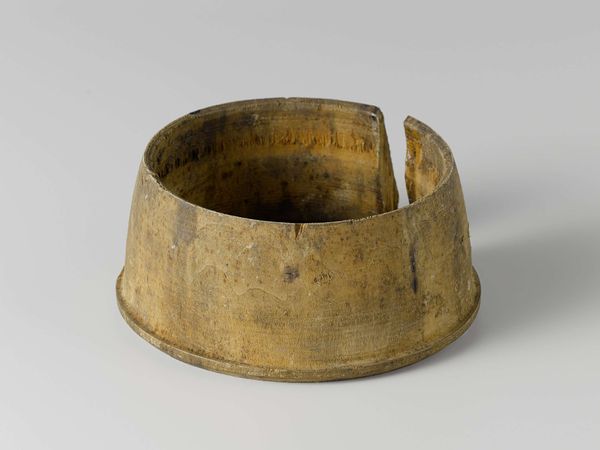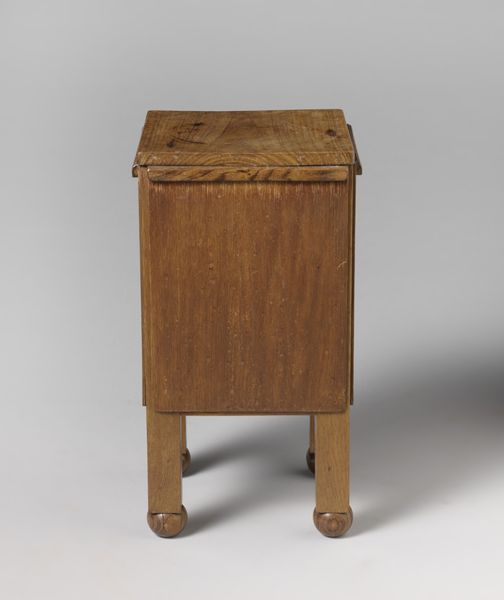
carving, ceramic, wood
#
carving
#
furniture
#
ceramic
#
stoneware
#
ceramic
#
wood
#
decorative-art
Dimensions: 6.8 × 15.9 × 9.2 cm (2 5/8 × 6 1/4 × 3 5/8 in.)
Copyright: Public Domain
Curator: Let's consider this captivating "Box" dating roughly from 1780 to 1850, currently residing here at the Art Institute of Chicago, and created by an anonymous artisan. Editor: The color and density immediately give the piece a kind of grounding energy. Given its age, the wood is very solid; there are very specific, careful etchings that decorate the exterior that must've been difficult. Curator: It’s incredible, isn't it? Think of this artifact as a lens through which we can consider intersections of domesticity, labor, and perhaps even resistance. The intimate nature of a box – its purpose as a keeper of secrets or treasures – intersects with questions of gender roles and hidden histories. Who might have owned such an object? And what does its creation reveal about the artisan's socio-economic position? Editor: Precisely. The object's social context informs the artistry, wouldn’t you agree? You can tell by the process alone the way in which the hand of the artisan works and imposes, through careful labor, an immense amount of value on the piece. It makes you consider its journey, as well as that of the person that constructed it. It appears that carving and possibly ceramic or stoneware production went into its crafting. Curator: Right, the very act of creating this box could be seen as an act of self-assertion within potentially restrictive environments. Wood and stoneware, readily accessible, could have been chosen intentionally, creating this really captivating, functional object. The choice to create beauty within utility reveals so much about the creative impulse in relation to social barriers. Editor: Definitely. How does labor mediate taste and function? Who makes such objects, and for whom? How accessible were the materials? It seems like a clear emphasis on local resources driving functional decorative design. Curator: I think it forces us to engage with issues of cultural memory, particularly from groups that might have otherwise been marginalized or erased from mainstream historical narratives. Editor: Absolutely. Material investigations unlock historical and present implications of human creation. A lot can be learned through analyzing it, its labor and production processes, and it seems both significant and telling that this piece's maker chose to create something like this box. Curator: Indeed. A quiet testament, resonating through the years. Editor: A simple container can certainly spark very complex thought.
Comments
No comments
Be the first to comment and join the conversation on the ultimate creative platform.
